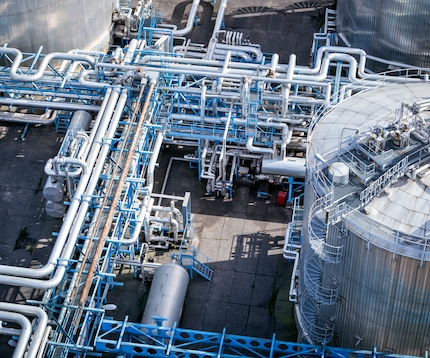
With its global multi-site rare gas production and expertise in loading systems, Linde leads the way in delivering krypton, xenon, and neon for emerging applications: from smartphone to space.
Welcome to the technology and innovation hub for Linde Gas. Here you'll find deep-dive articles showcasing the role of our gases and technologies in helping our customers across a wide range of industries.

With its global multi-site rare gas production and expertise in loading systems, Linde leads the way in delivering krypton, xenon, and neon for emerging applications: from smartphone to space.

By adding a mist of select chemistry to otherwise, inert nitrogen (N2), Linde offers a cost-effective accelerated cleaning and purging solution for decontaminating refinery process equipment.

As automotive OEMS rethink refrigerants, they can rely on Linde's supply expertise to provide R744 - a more sustainable solution that meets the strictest specifications.

Based on Materials Science expertise, Linde brings bespoke gas blends like its ADDvance® Laser230 to the additive manufacturing process - with real benefits for customers.

Developed in collaboration with Impact Innovations, Linde’s smart, reliable and safe gas-supply solution gives manufacturers more insights and more control of their cold spraying process.

How Linde is harnessesing the predictive power of AI to personalize care programs for sleep apnea patients in Europe.

From the 3D printing of rocket engines to launch propellants and in-space propulsion, Linde’s industrial gases play a critical role to accomplishing any space mission.

Using liquid nitrogen, Linde’s NITROBOOST™ technology helps frozen food customers reach maximum freezer performance with minimal disruption.

Using lances and liquid nitrogen, Linde's artificial ground freezing solutions provide stability where it's naturally lacking.

How Linde's hydrogen expertise and hydrogen-ready solutions help steelmaking and other heavy industry customers along their decarbonization journey.

The forces of nature can severely afflict human-built structures. Here is how the LINDOFLAMM® program ensures that eco power plants withstand wind and water.

As the plastics industry bends back into shape, Linde's PLASTINUM® CO2 portfolio helps customers inject some serious productivity gains.

How Linde’s oxygen-based solutions for gold extraction help increase a mine’s productivity through reduction in the use of harmful cyanide.

By partnering with CarbonCure Technologies, Linde helps reduce the concrete industry’s carbon footprint.

With pioneering work on dopant sources for ion-implantation in semiconductor fabs, Linde’s UpTime technology is driving cleaner mobility.